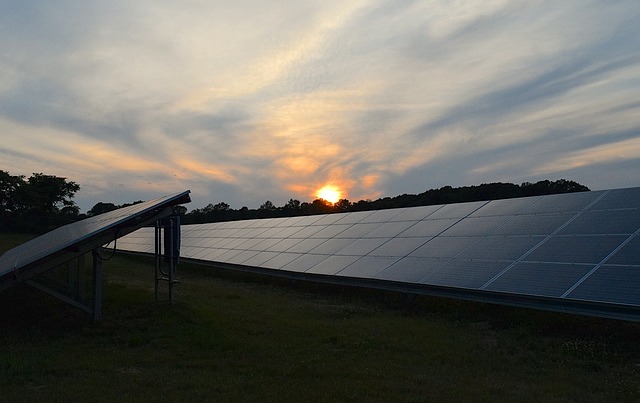The Science Behind Green Energy: Understanding Renewable Resources
In an era where climate change poses an existential threat to our planet, the pursuit of sustainable and renewable energy has never been more critical. Green energy sources are at the forefront of the fight against global warming, offering cleaner alternatives to fossil fuels. This comprehensive article delves into the science behind green energy, elucidating the various types of renewable resources and their roles in shaping a sustainable future.
Defining Green Energy
Green energy refers to energy derived from natural sources that are continuously replenished. This definition includes sunlight, wind, rain, tides, waves, geothermal heat, and even biomass. Unlike fossil fuels, which are finite and contribute to carbon emissions, green energy sources have a minimal environmental impact and promote a healthy ecosystem. Essentially, the essence of green energy lies in its sustainability and minimal carbon footprint.
The Importance of Renewable Energy
The importance of renewable energy sources transcends environmental considerations; it also encompasses economic, social, and geopolitical dimensions. Here are some key points:
- Environmental Benefits: Renewable energy reduces greenhouse gas emissions, lowers air pollution, and protects biodiversity.
- Economic Advantages: Transitioning to renewables can create jobs and stimulate economies, especially in manufacturing, installation, and maintenance sectors.
- Energy Security: Renewable energy sources can diversify energy supply, reducing reliance on imported fuels and increasing national security.
- Social Equity: Access to affordable energy can enhance the quality of life, especially in developing regions, fostering more equitable distribution of resources.
Types of Renewable Energy Resources
Understanding the different types of renewable energy is crucial in appreciating their unique contributions to sustainable development. The following sections explore the primary renewable energy resources used today:
Solar Energy
Solar energy harnesses the power of the sun through photovoltaic cells or solar thermal systems. Photovoltaics convert sunlight directly into electricity, while solar thermal systems use sunlight to heat water for residential or industrial applications. The science behind solar technology involves semiconductor materials that generate electric current when exposed to sunlight, a process known as the photovoltaic effect.
Solar energy has seen exponential growth in recent years, driven by declining costs of solar panels and advancements in technology. Its versatility allows for applications ranging from small residential systems to large solar farms, significantly reducing dependence on fossil fuels.
Wind Energy
Wind energy is produced when the kinetic energy of wind is converted into electricity by wind turbines. The mechanics involve rotor blades that capture wind energy, spinning a generator that produces electricity. The efficiency of wind energy is influenced by wind speed, turbine design, and placement.
Onshore and offshore wind farms are increasingly popular, with specific regions benefiting from consistent wind patterns that optimize energy production. Like solar, wind energy has become more cost-effective, making it a vital component of the green energy landscape.
Hydropower
Hydropower, or hydroelectric power, utilizes the energy of flowing water to generate electricity. It is one of the oldest and most widely used renewable energy sources. Dams are often constructed on large rivers to create reservoirs, allowing controlled water flow to turn turbines. The potential energy of stored water is converted to kinetic energy as it moves, enabling electricity generation.
While hydropower is a significant source of clean energy, it also has potential environmental impacts, including ecosystem disruption and displacement of communities. Thus, sustainable management practices are essential for minimizing these effects.
Geothermal Energy
Geothermal energy exploits heat from within the Earth to generate electricity or provide direct heating. This resource taps into the Earth’s internal heat produced by radioactive decay of minerals and volcanic activity. Geothermal power plants typically use steam from heated underground water to drive turbines, generating electricity.
Geothermal energy is adaptable for both large-scale plants and small residential systems, particularly in regions with high geothermal activity like volcanic areas. Its reliability and small land footprint make it a promising energy source for sustainable development.
Biomass Energy
Biomass energy is produced from organic materials such as plant matter, agricultural waste, and animal manure. The process involves converting these materials into biofuels or biogas through combustion, fermentation, or anaerobic processes. Biomass can be used directly for heating or converted into liquid fuels like ethanol and biodiesel.
Biomass is considered renewable as long as sourced sustainably. However, it does raise concerns regarding land use, competition with food supply, and emissions. Balancing these factors is crucial for realizing its full potential as a green energy source.
The Role of Technology in Green Energy
Advancements in technology play a pivotal role in expanding the capabilities of green energy. Innovations in energy storage, grid management, and efficiency enhancements are essential to address challenges like intermittent supply and integration into existing energy systems.
Energy Storage Solutions
One of the significant challenges facing renewable energy is its variability. Energy storage technologies, such as batteries, pumped-storage hydropower, and thermal storage, allow for the capture and redistribution of energy when demand peaks. For instance, lithium-ion batteries are increasingly used to store excess energy generated during sunny or windy periods for use during high-demand hours.
Smart Grids and Decentralized Energy Systems
Smart grids are advanced electrical grids that use information and communication technologies to enhance the reliability and efficiency of electricity distribution. They enable better energy management through real-time data monitoring and facilitate the connection of decentralized energy systems, allowing homes and businesses to produce their own energy. This decentralization encourages the integration of multiple renewable sources while increasing resilience against outages.
The Global Shift Towards Green Energy
The global shift toward green energy is being driven by policies, market forces, and public awareness. Governments worldwide have set ambitious targets for reducing carbon emissions and increasing the share of renewables in their energy mix. International agreements, such as the Paris Agreement, seek to unite nations in combating climate change through sustainable practices.
Economic Incentives and Corporate Responsibility
Financial incentives, such as tax credits, grants, and subsidies, play a vital role in encouraging investment in renewable energy. Corporations are increasingly embracing sustainable practices as part of their corporate social responsibility (CSR) strategies, emphasizing the need for transparency and accountability in environmental impact. As public awareness grows, consumers are also favoring businesses that prioritize sustainability.
Challenges and Barriers
Despite the growing momentum for renewable energy, several challenges remain. The transition from fossil fuels to green energy involves significant infrastructure changes, financing issues, and resistance from established industries. Furthermore, the intermittency of sources like solar and wind necessitates improvements in energy storage and grid management.
Future Prospects for Renewable Energy
Looking ahead, the future of renewable energy appears promising. Technological advancements, government policies, and societal shifts are paving the way for a more sustainable energy landscape. Innovations such as floating solar farms, advanced battery storage, and tidal energy are on the horizon, offering new possibilities for harnessing renewable resources.
Education and awareness-building will continue to play essential roles in driving public support for renewable energy initiatives. As more individuals recognize the urgency of addressing climate change, the demand for clean energy solutions is expected to rise, paving the way for a greener and more sustainable future.
Conclusion
The science behind green energy is a testament to human ingenuity and the potential for innovation to address global challenges. Renewable resources offer viable paths toward sustainability, ensuring that future generations inherit a healthy planet. To fully harness the power of green energy, collective efforts from governments, businesses, and individuals are paramount. As we stand on the brink of an energy revolution, the transition to renewable energy offers hope for a cleaner, more sustainable tomorrow.




